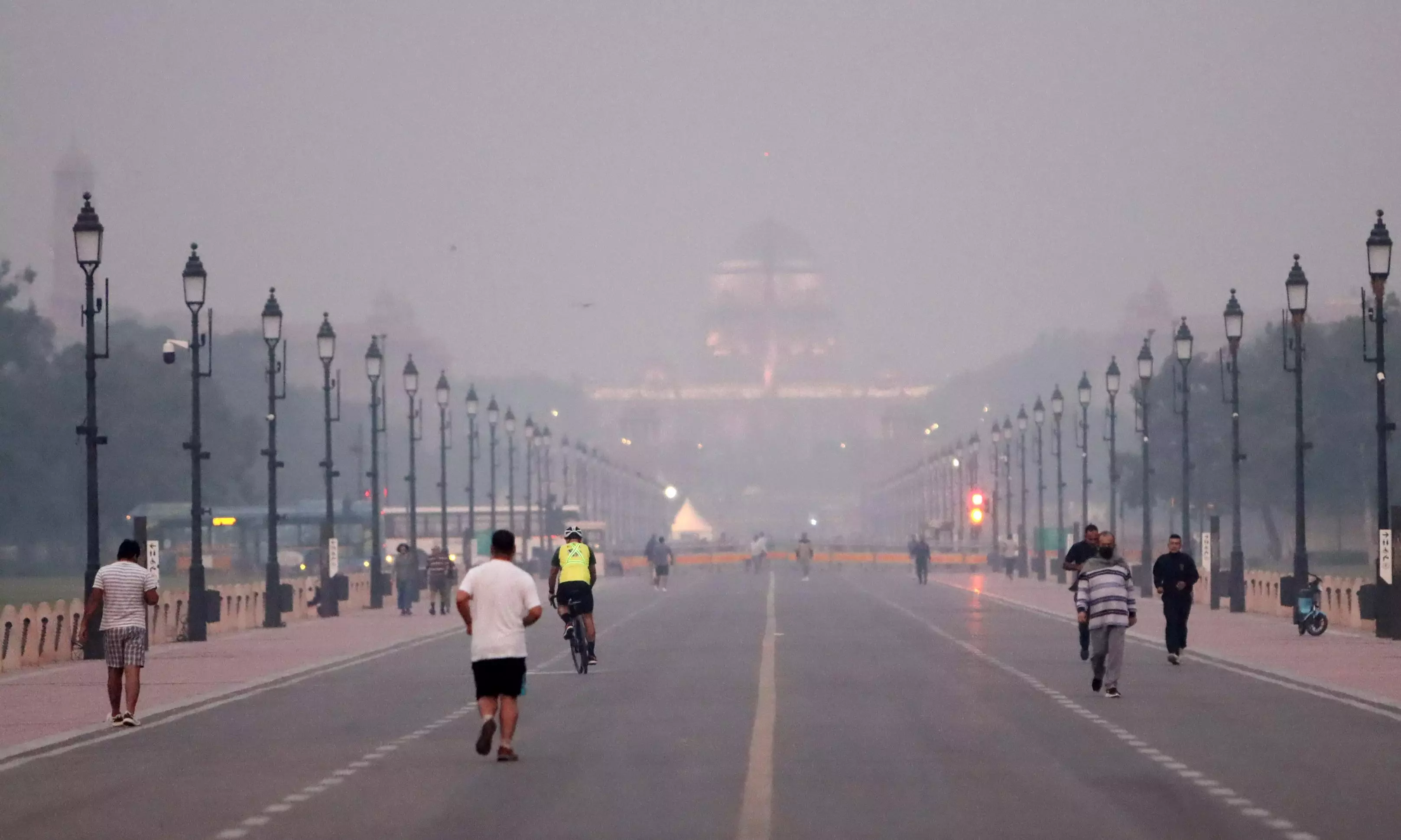
People jog at Kartavya Path as air quality continues to remain poor in New Delhi on Saturday morning. | PTI photo
Delhi-NCR | Poor air quality triggers health crisis as 69% of families report ailments
A survey revealed that 31% of respondents reported breathing difficulties or asthma, while another 31% were experiencing headaches

Amid alarming deterioration in air quality in Delhi-NCR after Diwali festivities, a latest survey has revealed that 69% of families have one or more members suffering from pollution-related ailments including sore throat, and cough.
Diwali night witnessed high levels of air pollution in the national capital and the surrounding regions, with Air Quality Index (AQI) readings spiking to the maximum level of 999 in several areas.
Also read: Delhi becomes world's most polluted city as residents cock a snook at firecracker ban
A survey conducted by Local Circles, a digital platform, gathered responses from more than 21,000 residents across Delhi-NCR, revealing the extensive effects of air pollution on the region’s population.
Breathing difficulties
As per the findings of the survey, 62% of families have one or more members experiencing burning eyes due to rising air pollution, while 46% have someone with a runny nose or congestion.
The survey revealed that 31% of respondents reported breathing difficulties or asthma, while another 31% were experiencing headaches. About 23% expressed feelings of anxiety or trouble concentrating, and 15% cited difficulties with sleep. However, 31% indicated that neither they nor their family members faced any issues related to pollution.
“With many already having cough and cold and some even suffering or already suffering from respiratory disorders like asthma, bronchitis, and chronic obstructive pulmonary disease (COPD), the severe or hazardous AQI levels post Diwali are likely to make things worse,” reads the survey.
The survey also asked Delhi-NCR residents as to how they are preparing to handle the significant decline in air quality, which is currently in the 300-500 AQI range and expected to double in the coming week.
Also read: Firecracker bursting shrouds Delhi in smog, creates hazardous respiratory conditions
Tackling pollution
Interestingly, out of 10,630 respondents, 15% are planning to leave the city for part of this period. However, 9% intend to stay indoors, increasing their intake of foods and drinks that “boost immunity”, while another 23% plan to use air purifiers alongside these indoor measures.
The responses reveal varied approaches to managing the pollution crisis. About 15% will continue their usual routines, wearing masks outdoors, and 15% will combine this with immunity-boosting foods. Only 23% of respondents plan to rely on air purifiers, while a significant portion of the population is prepared to endure the pollution with minimal intervention.

